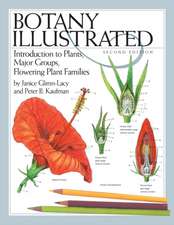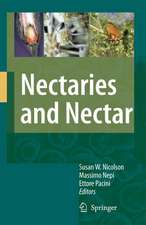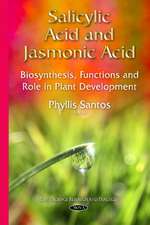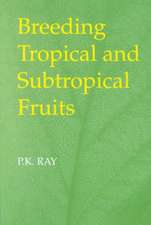Being alive on land: Proceedings of the International Symposium on Adaptations to the Terrestial Environment Held in Halkidiki, Greece, 1982: Tasks for Vegetation Science, cartea 13
Editat de N.S. Margaris, Margarita Arianoutsou-Faraggitaki, W.C. Oechelen Limba Engleză Paperback – 9 oct 2011
Din seria Tasks for Vegetation Science
-
 Preț: 34.59 lei
Preț: 34.59 lei - 18%
 Preț: 1219.16 lei
Preț: 1219.16 lei - 20%
 Preț: 554.66 lei
Preț: 554.66 lei -
 Preț: 394.12 lei
Preț: 394.12 lei -
 Preț: 396.02 lei
Preț: 396.02 lei - 24%
 Preț: 790.13 lei
Preț: 790.13 lei - 18%
 Preț: 1825.75 lei
Preț: 1825.75 lei - 18%
 Preț: 1218.69 lei
Preț: 1218.69 lei - 24%
 Preț: 784.53 lei
Preț: 784.53 lei - 18%
 Preț: 1233.69 lei
Preț: 1233.69 lei -
 Preț: 73.90 lei
Preț: 73.90 lei - 18%
 Preț: 1222.01 lei
Preț: 1222.01 lei - 18%
 Preț: 952.09 lei
Preț: 952.09 lei - 18%
 Preț: 1225.94 lei
Preț: 1225.94 lei -
 Preț: 388.31 lei
Preț: 388.31 lei -
 Preț: 391.40 lei
Preț: 391.40 lei - 18%
 Preț: 1220.45 lei
Preț: 1220.45 lei - 18%
 Preț: 949.23 lei
Preț: 949.23 lei - 18%
 Preț: 943.73 lei
Preț: 943.73 lei - 18%
 Preț: 1238.11 lei
Preț: 1238.11 lei - 18%
 Preț: 1232.26 lei
Preț: 1232.26 lei - 24%
 Preț: 796.72 lei
Preț: 796.72 lei - 24%
 Preț: 1068.94 lei
Preț: 1068.94 lei -
 Preț: 368.39 lei
Preț: 368.39 lei - 18%
 Preț: 1230.03 lei
Preț: 1230.03 lei - 24%
 Preț: 783.41 lei
Preț: 783.41 lei - 18%
 Preț: 948.16 lei
Preț: 948.16 lei - 18%
 Preț: 948.61 lei
Preț: 948.61 lei - 24%
 Preț: 1053.39 lei
Preț: 1053.39 lei
Preț: 402.76 lei
Nou
Puncte Express: 604
Preț estimativ în valută:
77.07€ • 80.68$ • 63.77£
77.07€ • 80.68$ • 63.77£
Carte tipărită la comandă
Livrare economică 07-21 aprilie
Preluare comenzi: 021 569.72.76
Specificații
ISBN-13: 9789400965805
ISBN-10: 940096580X
Pagini: 336
Ilustrații: 334 p.
Dimensiuni: 210 x 280 x 18 mm
Greutate: 0.76 kg
Ediția:Softcover reprint of the original 1st ed. 1984
Editura: SPRINGER NETHERLANDS
Colecția Springer
Seria Tasks for Vegetation Science
Locul publicării:Dordrecht, Netherlands
ISBN-10: 940096580X
Pagini: 336
Ilustrații: 334 p.
Dimensiuni: 210 x 280 x 18 mm
Greutate: 0.76 kg
Ediția:Softcover reprint of the original 1st ed. 1984
Editura: SPRINGER NETHERLANDS
Colecția Springer
Seria Tasks for Vegetation Science
Locul publicării:Dordrecht, Netherlands
Public țintă
ResearchCuprins
One: Systems’ Adaptations.- 1. Convergence and non-convergence of Mediterranean type communities in the old and the new world.- 2. Functioning of tundra vegetation in relation to life forms.- 3. Adaptive plant evolution in the alpine environment of the Greek mountains.- 4. History and genetics of tolerance to the natural phyto-toxic media of western Balkans.- 5. Morpho-anatomical syndromes in phyto-indicators of extreme stormy habitats in the northeastern Adriatic.- 6. Leaf form of the woody plants of Indiana as related to environment.- 7. Fire adaptation strategies of plants in the French Mediterranean area.- Two: Adaptations to Water (Availability or Deficiency).- 8. Root sheaths as an adaptation to soil moisture stress in arid zone grasses.- 9. Osmotic and turgor relations in selected chaparral shrub species.- 10. Adaptations of the photosynthetic pigment system to ecological conditions with respect to water in different terrestrial plants.- 11. Ways of detecting adaptive responses of cultivated plants to drought. An agronomic approach.- 12. Structural aspects of the adaptation of some blue-green algae and diatoms to desiccation.- Three: Adaptations to Temperature.- 13. Species-specific responses to temperature in acid metabolism and gas exchange performance of Macaronesian sempervivoideae.- 14. Soil temperature effects on carbon exchange in Taiga trees.- 15. Influence of the environment on cold hardening and winter survival of forage and cereal species with consideration of proline as a metabolic marker of hardening.- Four: Adaptations to Light.- 16. Adaptations of understorey species to exist in temperate deciduous forests.- 17. Growth of Dactylis glomerata L. and Bromus erectus Huds. in natural habitats and along light and water gradients.- 18. A model of growthkinetic theory of Anacystis nidulans in light-limited culture.- Five: Nutrition.- 19. Fe, Co, Zn, Br, Cs, Se, Cr, Sb and Sc content and growth of soybean nodules as affected by nutrient deficiency.- 20. Effect of Molybdenum and Cobalt on the nitrogen-fixing activity of Rhizobium japonicum and soybean yield.- Six: Interactions.- 21. The measurement of adaptation in cultivated plants.- 22. Branching patterns in columnar cacti.- 23. Edaphic restriction of Cupressus forbesii (Tecate Cypress) in Southern California, U.S.A. — A hypothesis.- 24. Ultrastructure and cytochemistry of retinacles and pollinia from Mediterranean Orchids— their relation with pollination.- 25. Observations on the dynamics of three populations of oak seedlings (Quercus sessiliflora Ehrl.) in the Fontainebleau forest.- 26. Effect of plant volatiles on rhizospheric and phyllospheric mycoflora.- 27. Moss growth and development is facilitated by natural bacterial flora.- 28. Comparative ability of Rhizobium phaseoli strains.- Seven: Pollution.- 29. The importance of forests in the region of the Pardubice industrial agglomeration.- 30. Modification of pollutant effects by ecological factors.- 31. Tree barks and pollutant zoning.- 32. Heavy metal uptake by radish in relation to soil fertility and chemical extractability of metals.- 33. Adaptation of soil microorganisms to decomposition of some herbicides.- 34. Determination of Zinc, Iron and Aluminum in halophytic species of the river Sado estuary-Portugal, by atomic absorption spectrometry.














